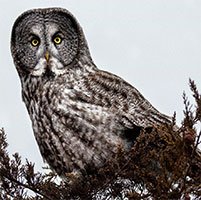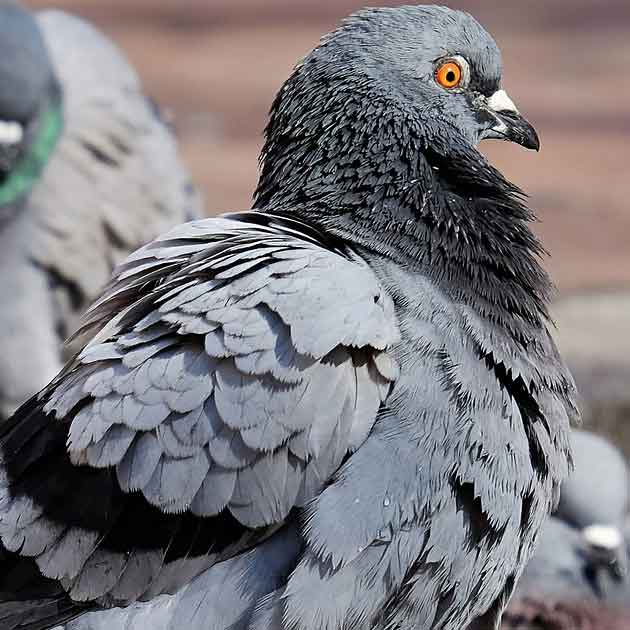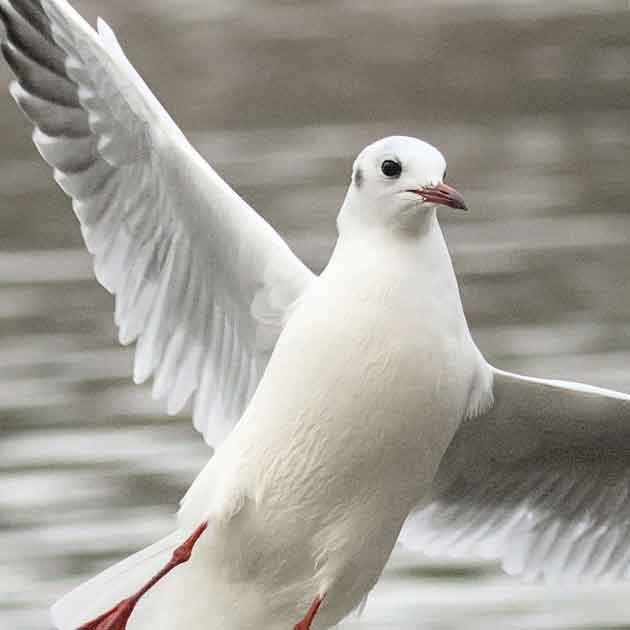Our New Friend
 Here at Hawkeye, we are thrilled to announce the arrival of our newest family member, Hoot. Hoot is a three week old Great Grey Owl who we can’t wait for you to meet! Hoot will be the newest star of our falconry experience, where we offer a unique opportunity for anyone ages five and up to get up close and personal with our birds of prey, and even fly a Harris Hawk directly to your hand. Our falconry experience will be reopening starting June 27th 2020 and we are so happy to be able to provide a safe and healthy experience following new customer safety protocols to the best of our abilities. To sign up for your exciting and educational falconry experience contact Hawkeye today at (416) HAWKEYE (416-429-5393).
Here at Hawkeye, we are thrilled to announce the arrival of our newest family member, Hoot. Hoot is a three week old Great Grey Owl who we can’t wait for you to meet! Hoot will be the newest star of our falconry experience, where we offer a unique opportunity for anyone ages five and up to get up close and personal with our birds of prey, and even fly a Harris Hawk directly to your hand. Our falconry experience will be reopening starting June 27th 2020 and we are so happy to be able to provide a safe and healthy experience following new customer safety protocols to the best of our abilities. To sign up for your exciting and educational falconry experience contact Hawkeye today at (416) HAWKEYE (416-429-5393).
Follow "Hoot" on our new blog! It's a HOOT :)
Visual Characteristics
 The Great Grey Owl is quite a majestic looking bird, with a very large flat facial disk face, a white bow between their eyes, a white moustache like feature, yellow beak, and beating yellow eyes that seem as if they are staring into your soul. Although many birds display sexual dimorphism, distinctive visual difference between males and females, the Great Grey Owl looks the same for both sexes, with a slight difference in size between the males and females; females being larger and males being smaller as with almost every species of bird. The feathers on a great grey are variegated grey, white, and brown throughout the entire body, but the feathers on their face, although the same colours at the rest of their body form a very distinctive circular pattern matching the shape of their face. Seeing a Great Grey Owl in the wild is very rare, as they are very elusive forest hunters, but if you are so lucky, they are a site to see.
The Great Grey Owl is quite a majestic looking bird, with a very large flat facial disk face, a white bow between their eyes, a white moustache like feature, yellow beak, and beating yellow eyes that seem as if they are staring into your soul. Although many birds display sexual dimorphism, distinctive visual difference between males and females, the Great Grey Owl looks the same for both sexes, with a slight difference in size between the males and females; females being larger and males being smaller as with almost every species of bird. The feathers on a great grey are variegated grey, white, and brown throughout the entire body, but the feathers on their face, although the same colours at the rest of their body form a very distinctive circular pattern matching the shape of their face. Seeing a Great Grey Owl in the wild is very rare, as they are very elusive forest hunters, but if you are so lucky, they are a site to see.
Size Comparison
The Great Grey Owl is not the largest Owl we have in North America if we are relying strictly on average weight, but the Great Grey Owl is in fact the largest species of owl on this continent if we are talking about height. If you were to line up all the owls in North America, you would think the Great Grey is the largest by weight as well, but really they are just a big fluffy ball of feathers. To get a better idea, let’s compare the Great Grey with the Great Horned Owl; which is the largest owl in Ontario by overall size. The Great Grey Owl weighs an average of 1.1 kg, where the Great Horned Owl weighs an average of 1.4 kg, so you can see that this is a pretty tight race for largest owl. When comparing the heights of these two owls, the Great Grey is an average of 27 inches tall with the Great Horned only being an average of 22 inches tall, again not too far off from each other. But when we compare the wing span of these two owls there seems to be quite a significant difference with the Great Grey at an average of 2 to 3 ft, and the Great Horned at an average of 3 to 5 ft. Hawkeye also has what is called a Sub-Arctic Great Horned Owl who you will get to meet during your falconry experience and learn more about as well.
Food and Hunting Style
Great Grey Owls are non-migratory birds that live and hunt through all weather conditions; although they may travel slightly south in search of food. They can even hear a small rodent from a kilometer away under up to two feet of snow; now that is excellent hearing. In fact, the large flat facial disk of the Great Grey Owl functions similar to that of a dish antenna, amplifying and detecting sounds and allowing the owl to pinpoint exactly where the sound is coming from; this is a common characteristic among all owls. The outer ring of the face is composed of stiff feathers, which help to channel the sound and direct it to the true ears of the owl, which are located on the sides of the owls head like our own. The Great Grey Owl has asymmetrical ear openings, which allow them to accurately detect the height and direction which the sound is coming from; their hearing is said to be over ten times better than our own. Like most owls, Great Grey owls are found hunting at dusk, but if having difficulty finding available food, you may catch them hunting during the day time as well. Their main diet consists of about 90% small mammals including voles, mice, squirrels, rabbits, and rats. But if these are not available, they may also take down ducks, grouse, and other small game birds.
Nesting
Like most owls, Great Greys do not build their own nests. They use empty nests of other raptors or larger species of birds, letting others do the work for them; they often switch nesting locations year after year. Great Greys normally have a clutch size of four eggs, with an incubation period of an average of 30 days. In the bird world, incubation times usually reflect the size of the bird at hand, with small song birds hatching in less than 2 weeks, and larger birds taking up to 80 days.
Range
Typically Great Greys are found in the Northern reaches of North America, as far north as Alaska and as far south as California, staying in places like Washington, Oregon, Idaho, and Nevada all year long. Their range spans pretty much all the way across the provinces in Canada to Southern Quebec. During the winter they may travel slightly south of Ontario into Wisconsin, Michigan, Illinois, Indiana, Ohio, Pennsylvania, and New York State. But as stated previously, since they are generally resident birds, they do not migrate, but will travel if there is a lack of food in a certain area.
Learn More
To learn more about birds of prey and how you can get up close and personal with owls like Hoot, contact Hawkeye today, we will take you on a once in a lifetime falconry experience that will be remembered for years to come.













